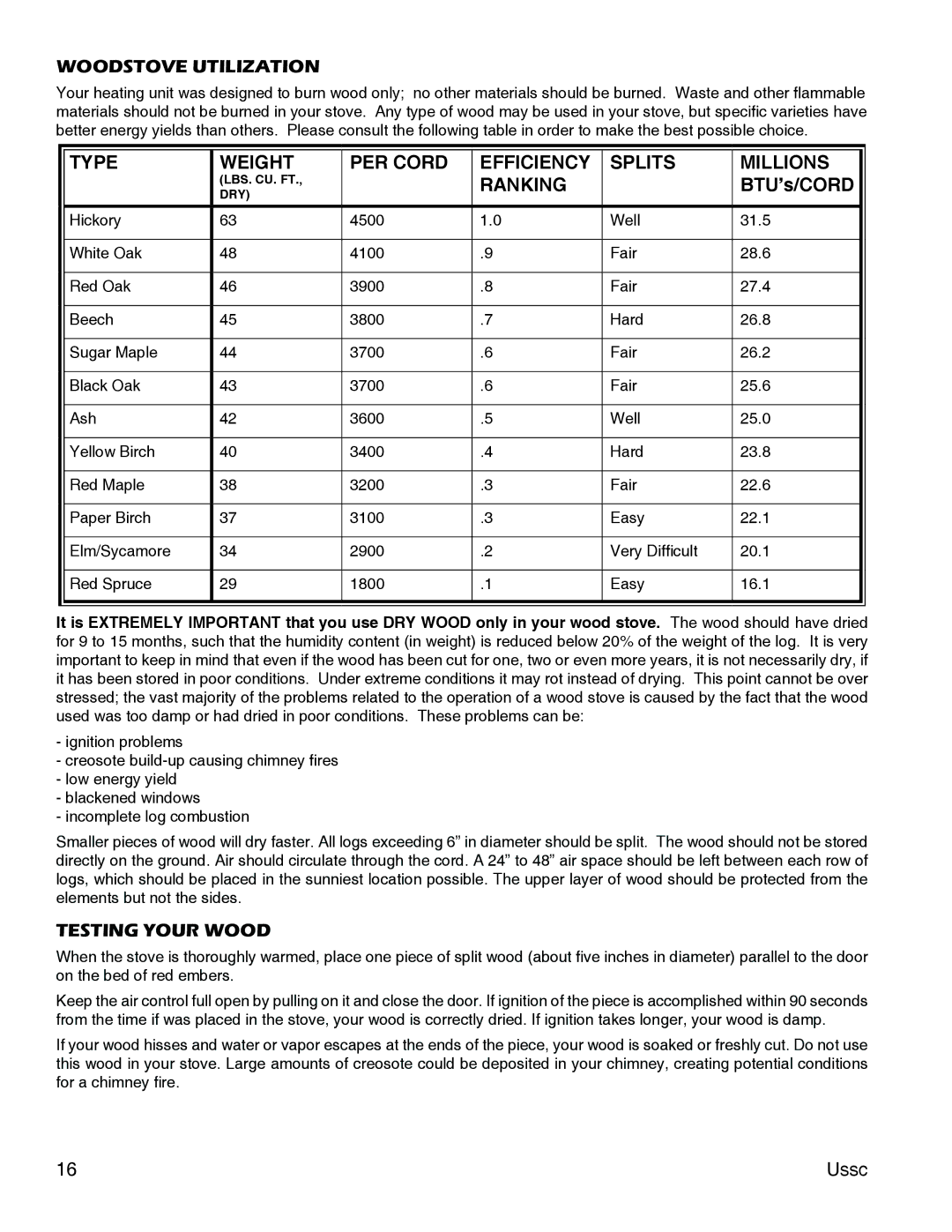3000 (L) specifications
The United States Stove Company 3000 (L) is a powerful and efficient wood-burning stove designed to deliver reliable heat with modern features. Recognized for its robust construction, the 3000 (L) reflects a commitment to quality that has made United States Stove a staple in the heating industry for decades.One of the standout features of the 3000 (L) is its large firebox. This design allows for extended burn times, accommodating bigger logs that can provide continuous warmth throughout the night. With a firebox capacity of up to 3.5 cubic feet, users can enjoy fewer reloads while still benefiting from an impressive heat output. The estimated heating capability of the stove is around 2,000 square feet, making it suitable for medium to large-sized homes.
Equipped with an efficient air wash system, the 3000 (L) promotes cleaner combustion while minimizing creosote buildup within the chimney. This system optimizes airflow, ensuring that the fire burns hotter and cleaner, thus improving efficiency. Furthermore, the stove is designed to achieve EPA-certified emissions standards, making it an environmentally responsible choice for wood heating.
Incorporating advanced technologies, the United States Stove 3000 (L) features a multi-fuel capability, allowing it to burn various types of fuel, including wood, coal, and pellets, enhancing its versatility. The stove boasts a heavy-duty cast iron door that not only provides durability but also allows for an attractive view of the fire, creating a warm ambiance in any living space.
The 3000 (L) also includes adjustable air control settings, allowing users to fine-tune their heating experience according to their preferences. The built-in ash pan simplifies cleanup, making maintenance hassle-free and convenient for everyday use.
With its combination of efficiency, capacity, and advanced features, the United States Stove 3000 (L) serves as an excellent heating solution for those looking to enhance their home’s comfort. It embodies a blend of traditional craftsmanship and modern technology, ensuring longevity and reliability. Whether you are heating a cozy cabin or a family home, the 3000 (L) stands out as a leading option in the world of wood-burning stoves.
